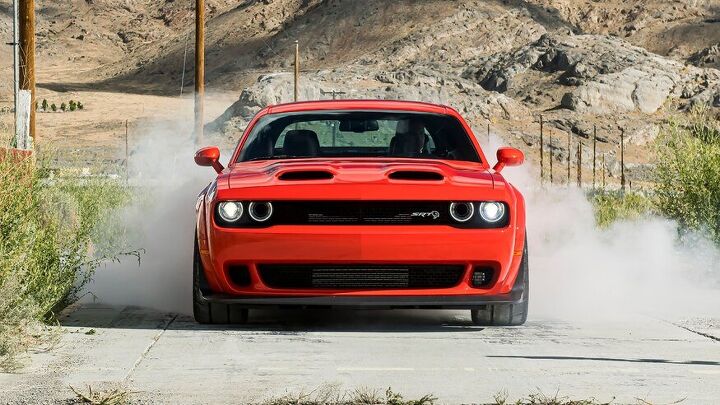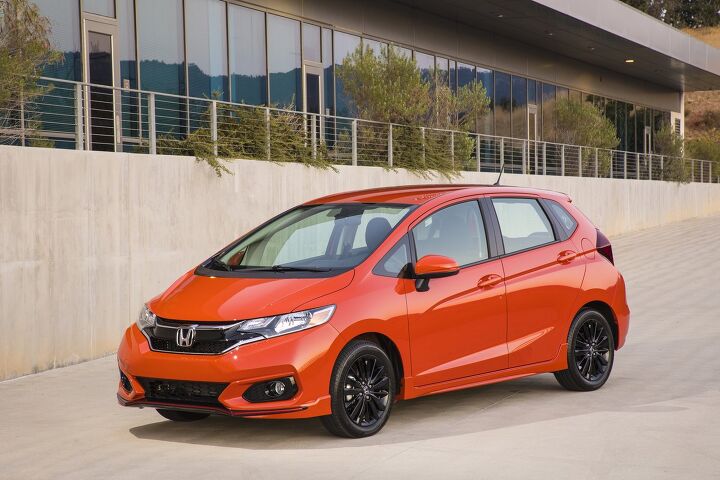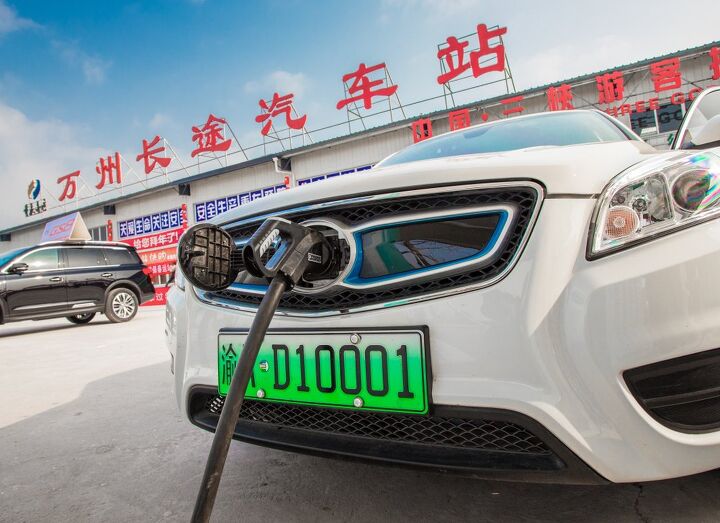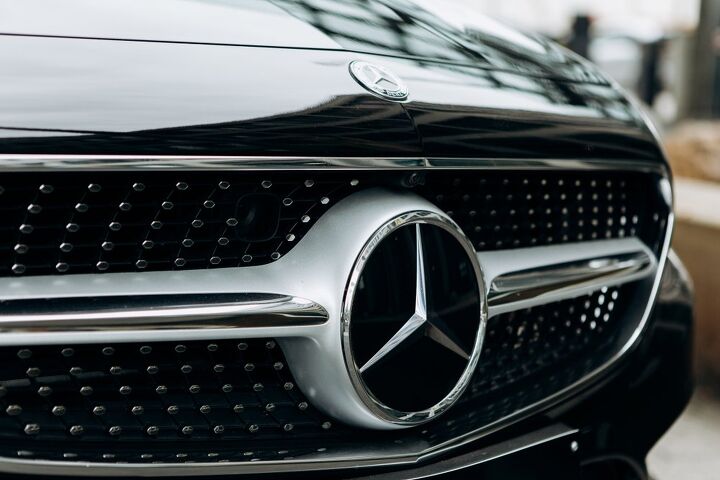#VehicleSales
EVs Are Becoming More Expensive, Not Less
A few years ago, the industry narrative was that all-electric vehicles would reach financial parity with their combustion-driven counterparts in 2025. The assumption was that this would gradually occur by way of ramping up battery production and leveraging economies of scale. However, reality had a different take, as the world is now confronting record-setting prices across the board. Manufacturer and dealer hikes have resulted in the average invoice of EVs rising to $54,000 — roughly 10 grand higher than the typical transaction price of gasoline-powered vehicles, according to J.D. Power.
With economic pressures spiking the value of all automobiles, hardly anything is leaving the lot for less than it could have been had for in 2020. But the increases seen on all-electric models are actually outpacing the models we’ve been told they’re supposed to replace.
Industry Braces for Increased Volumes, Lower-Margin Vehicles
It’s a little early in the year to say anything definitive about 2022 vehicle volumes, however, the automotive industry has been signaling that production numbers should begin to rise in the coming months. While that sentence should be cause for a sigh of relief, there are parts of the industry that might not feel as good about it as you probably do.
With supply chain problems having drastically limited vehicle production during the pandemic, many dealers opted to price their goods well above anything that could be considered normal. This worked out poorly for many of the smaller outfits as larger retailers enjoyed record-breaking profits in 2021. Some manufacturers also benefited financially, as the chip shortage allowed them to prioritize their highest-margin products. Unfortunately for them, 2022 is likely to bring affordable vehicles back into play and gradually pull pricing closer to something approaching normality.
Dodge Challenger Finally Takes Sales Crown
For the first time since American muscle returned to the assembly line in earnest, Dodge’s Challenger has managed to outsell both the Ford Mustang and Chevrolet Camaro inside the United States. Though Mopar fans might point out that Dodge would win every year if we bothered to include Charger sales in the headcount or were more precise when making determinations about what constitutes a muscle vs pony car.
Regardless of semantics, the Big Three have their performance icons and the Challenger has taken the two-door sales crown for the first time in modern history. Sadly, it was less about Dodge making inroads with new customers than it was about the other brands flubbing things. Performance vehicles aimed at the middle class are presently experiencing a rough patch, with the Challenger having lost the least amount of ground in the last decade.
Average Automotive Pricing Window Continues Shifting Upwards
Now that fuel prices are popping off and it’s becoming glaringly obvious that we’re falling into another recession, one would hope that automakers would be prioritizing their more economical models. Unfortunately, most manufacturers operating in North America spent the last decade culling the smallest models from their lineup. Domestic brands took the practice so far that several no longer offer traditional cars, opting instead for compact crossover vehicles yielding higher price tags and broader profit margins. Foreign brands were only marginally more reserved with the ax.
This has helped move the average vehicle transaction price beyond $42,000 in the United States, according to Edmunds, with used rates sitting somewhere around $28,000. Though the cause isn’t entirely down to there being a complete lack of econoboxes on the market. Increased regulations and the industry’s newfound obsession with connectivity/tech have also increased pricing. But it doesn’t change the fact that we’re now confronting a situation where almost nobody is selling the kind of small, affordable vehicles that cater to shoppers needing to be thrifty right when they really need them.
Study: Automotive Debt Is Out of Control, You're Being Swindled
Consumer Reports just released the findings of a year-long stud y looking into the latest trends in automotive loans and car payments. The resulting information highlights just how explosive the debt growth has been over the last 10 years and the arbitrary way in which borrowers are now being treated.
Long story short, we’re all being swindled.
With vehicle prices ballooning and the associated loans becoming longer than ever, dealers and lenders seem to be operating whatever way yields the steepest profit margins with only a modicum of consideration being given to the established frameworks designed to act as a guard rail. This has led to U.S. citizens carrying around a record $1.37 trillion in automotive load debt and customers with good credit being treated no different than those that fall into the subprime category. Sadly, the issue appears only appears to be worsening as new economic perils are only making things more expensive. Meanwhile, data from the Federal Reserve Bank of New York is projecting national auto debt to swell to $1.42 trillion by year’s end.
Chinese Auto Sales Reportedly Rebounding Robustly
The China Association of Automobile Manufacturers (CAAM) is reporting its home market grew 74.9 percent in March, resulting in nearly 2.53 million new-vehicle deliveries. While we’re often skeptical of the organization’s rosy predictions and tallies, it’s claiming the recent sales surge is the direct result of how bad things had been in the previous year. China instituted some of the most aggressive lockdown protocols of any nation in the initial stages of the pandemic and had already been struggling with a declining vehicle market in 2019.
CAAM is making no illusions about the gains being based on anything other than how horrible March of 2020 was and doesn’t want to overpromise moving ahead. It’s a warning that the semiconductor shortage will likely worsen as the year continues, dampening Q2 projections. But the organization has not yet revised its forecast for next year’s overall sales. Last December, CAMM predicted roughly 26.3 million vehicles would be delivered by the end of 2021 and appears to be running with that target.
Rich People Are Finally Back On Top, Mercedes Takes U.S. Quarterly Sales Honors
Mercedes-Benz had an enviable first-quarter and managed to find itself back on top of U.S. luxury sales, icing out its chief rival BMW after two years of living in its shadow. Mercedes reportedly sold 78,256 vehicles within the first three months of 2021, thanks largely to its crossover vehicles.
It’s a year-over-year increase of 16 percent and helps to explain why the brand is relegating the CLS to a single trim while expanding its options for heavy hitters like the GLC Class. But Mercedes’ recent success may have more to do with the way the luxury segment is rebounding as a whole. As pedestrian models are finding themselves coming out of the pandemic with fewer customers, especially of the subprime variety, high-end luxury brands are enjoying clearer skies.
Study: U.S. Driving Distances May Have Already Peaked, What About Ownership?
North America has changed immensely under the pandemic. The government tested what it could get away with under the premise of health-and-safety-related lockdowns; countless small businesses have gone belly up while larger entities seem to be thriving. Meanwhile, we’ve been informed that nature is returning to urban environments as humanity forced itself to stay indoors. Waters cleared, the air was purified, and animals ventured deeper into our territories while we sheltered in place. It was if Homo Sapiens had finally been demolished, providing Mother Earth a prime opportunity to patch herself up.
For a time, there was even a period where you could enjoy open, nearly enforcement-free roadways. Some cities, including mine, saw traffic declines in excess of 40 percent during the opening weeks of the virus response. While this ended when New York City brought in those temporary (and wildly unpopular) quarantine checkpoints at major crossings and attempted to open up for commerce, it still seems like far fewer individuals are driving overall.
That’s because there are. People just don’t need to venture out of their homes as much in 2020 and it is not just the lockdowns contributing to this change. Ordering items online has played a major factor, as does the increased reliance on at-home entertainment. In fact, a new study has suggested Americans may never drive as much as they did just a decade ago. This seems especially likely with so many companies encouraging office-based employees to continue working from home indefinitely, flushing millions of daily commutes down the proverbial toilet.
U.S. Car Sales Are Down, Average Transaction Prices Are Up
Yesterday, we covered how the economic ramifications of the pandemic has negatively impacted the sales volume of electric vehicles (the ones that aren’t status symbols, anyway) in the United Kingdom. We’ll take a broader view of things today, focusing entirely on the general sales trends taking hold in the United States ahead of the Labor Day weekend.
Under normal circumstances, this would be a period where dealerships tempt the public with juicy discounts to clear out their lots for the subsequent model year. But the pandemic has left factories idle for months and vehicles in short supply. While that wasn’t an issue when everyone was first locked indoors, many states allowed their citizens to reclaim their autonomy as dealers sought new ways of selling without the face-to-face rigamarole of interacting with customers directly. We’re now in a situation where demand remains suppressed but has increased to a level where it outpaces the supply of many popular models — increasing the average transaction price of vehicles.
It’s not a great time to be shopping for a car.
Dealers Forecast Modest Sales Decline in 2020
The National Automobile Dealers Association (NADA) released its annual new-vehicle sales forecast for 2020, estimated a modest decline in U.S. volume. The announcement dropped on Tuesday, citing rising transaction prices as the probable cause. With fewer sedans on the market ( especially among domestic automakers), customers are shifting to crossover vehicles with higher price tags. Fortunately, the United States’ economy has remained roughly as stable as the cost of fuel — avoiding market conditions that normally encourage customers to swap into affordable economy cars or simply hold onto their current ride.
“We expect new light-vehicles sales will come in at 16.8 million units for 2020, roughly a 1.2 percent drop from 2019 sales volume,” NADA senior economist Patrick Manzi explained. “As for 2019, it appears new vehicle sales will best the expectations of most in the industry by topping 17 million units for the fifth straight year.”
EV Sales Surge in California After Chevrolet Bolt Introduction; Hybrids Take a Dive
If the automotive market were a foot, electric vehicles would be the curled-up toe on the outside edge. It doesn’t take up a lot of space, you’re not entirely sure what it’s there for, and some people think it’s weird. Still, it clearly has a purpose to serve and it’s hard to imagine the foot without it. There’s potential in that digit.
Strong Chevrolet Bolt deliveries in California pushed up the state’s EV sales by 91 percent in the first quarter of this year. It may still account for only 2.7 percent of the Golden State’s new vehicles, but it’s still more than many of us expected to see this soon. Sales of the more-affordable, longer-ranged EV seem to suggest the market might begin to gobble up plug-ins as more affordable models with superior range continue to arrive.
Subaru Profits Slip Despite Steady Sales; Self-Betterment and Currency to Blame
After several years of record growth, a combination of increasing costs and exchange losses forced Subaru’s operating profit to fall by 27 percent in its recently ended fiscal year. No longer Fuji Heavy Industries, and now focusing primarily on automotive product, Subaru Corporation announced its operating income had dipped to $3.69 billion in April. Net income also took a hit, falling by 35 percent to $2.54 billion.
Considering the company finally surpassed the one million annual sales mark for the first time in its history, it is surprising to see the brand faced with anything other than glowing praise. However, improved sales and continued revenue growth doesn’t tell the entire story. Subaru’s European sales declined by 2.6 percent — matching the trend in China and Japan. North America, which accounts for the majority of the brand’s sales, maintained its interest but the overall market has slowed.
“U.S. demand has peaked out,” Subaru CEO Yasuyuki Yoshinaga explained. “The market environment has increasingly become tougher. We will carefully the situation and will take the necessary steps to maintain our sales, including incentives.”
The Truth About Cars Announces The Top Ten Automakers Of 2010
Now that most of the large car companies have supplied their numbers, TTAC has compiled its annual table of the world’s largest automakers. In doing so, we have attempted to come as close as possible to the methodology used in the official OICA list, which will be published some time this summer. Here is the 2009 version as a reference. And here are TTAC’s Top Ten of 2010:




























Recent Comments